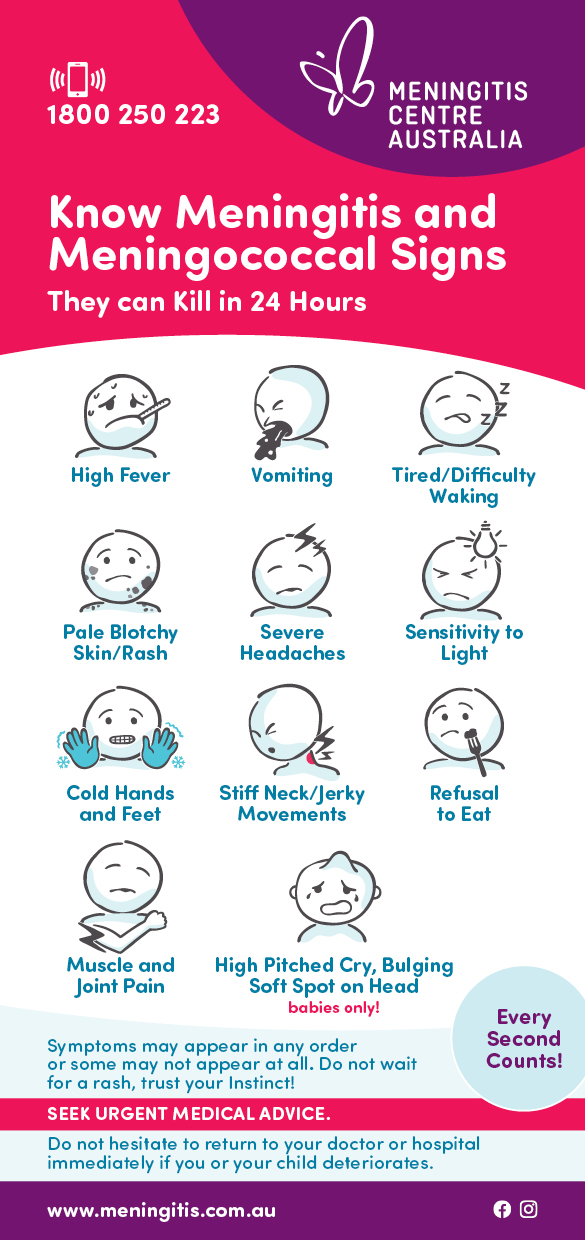It’s a quick and easy DIY test that worried parents can carry out at home if they fear that their child has meningitis.
But now experts are warning that doing the ‘glass test’ – rolling a glass or tumbler over a suspicious rash to see whether it disappears – cannot be relied on to give an early warning of the deadly disease.
They say that once a rash develops, it may already be too late to help, as it means the meningitis has advanced and a potentially fatal condition called sepsis has taken hold.
Death from sepsis can be frighteningly rapid.
Parents have long been advised that if a red or purple skin rash on their child doesn’t fade when a glass or tumbler is pressed against it, it is a telltale sign of the brain disease.
A recent survey suggested that 40 per cent of mothers believe the method is the best way to identify the problem.
But Dr Jolanta Bernatoniene, consultant paediatrician at Bristol Royal Hospital for Children, says: ‘Don’t wait to see if a rash develops.’
Instead, parents need to be aware of other symptoms of sepsis, she says.
These are similar to the symptoms of flu, such as headache with nausea and vomiting, and a high fever with shaking, cold hands and feet.
Pale cold or mottled skin, dislike of bright lights, drowsiness, irritability and not passing urine are other red flags.
Babies my appear pale and floppy and lethargic.
Dr Nelly Ninis, a consultant paediatrician at St Mary’s Hospital London and an adviser at Meningitis Research Foundation, says: ‘Meningitis is a time-critical illness, in which every minute matters.
‘The glass test is one way of spotting meningitis, but if the rash does appear, this happens midway through the illness.
‘At this point, it might be too late. If your child is more unwell than you’ve ever seen them before, and if they’re getting sicker by the hour, see a doctor, and ask, “Is this sepsis?” ’
Dr Bernatoniene adds: ‘With prompt treatment, even patients with severe meningitis can make a good recovery.
‘Parents should trust their instincts if their child appears be getting worse and seek medical attention immediately.’
Normal rashes are often the result of inflammation on the skin surface.
Pressure from a glass pressed on the rash restricts the blood supply to it, leading to blanching or whitening.
Meningitis is inflammation of the protective membranes called meninges surrounding the brain and spinal cord. It is usually caused by a virus or bacteria.
The rash it causes is different from the normal sort. It can appear as pin-prick red or purple spots on the skin, or look like bruising.
The marks occur when the bacteria that cause meningitis invade the bloodstream, producing toxins and damaging blood vessels.
Blood starts to ‘leak’ into the skin, resulting in the characteristic rash, but this stage could mean sepsis has already set in.
Sepsis strikes when an infection sparks a violent immune response in which the body attacks its own organs.
Aaron Phipps, 36, a Paralympian and GB wheelchair rugby player, was diagnosed with bacterial meningitis and sepsis at 15.
‘My first symptoms were similar to flu,’ he recalls. ‘I did get a rash but by then I was delirious and confused and had collapsed. I went from rash to life-support machine in 60 minutes.’
With all his organs shutting down, Aaron was placed in an induced coma and given a 20 per cent chance of survival.
Incredibly, he recovered, but had to have both legs and most of his fingers amputated and was in hospital for a year.
‘I urge parents and teens to familiarise themselves with the early symptoms,’ he says.
SOURCE: Daily Mail UK

